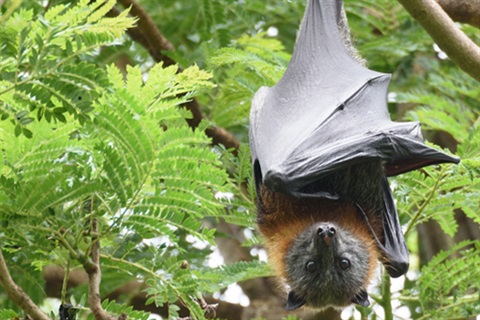
Byron Shire Council has launched a new Facts about Bats book to help explain the important role our local Flying Foxes play in helping the Byron Shire landscape to thrive.
"Flying Foxes do an incredible job of seed-spreading and pollinating eucalypt and rainforest flowers and without their help we could face a future with no rainforests, and no habitat for wildlife like koalas," Council's Biodiversity Project Officer Peter Boyd said.
"Many people don't know how important our bats are, only that they are noisy and smell a bit," he said.
Thanks to funding from the NSW Environment Trust, Council staff developed the Facts about Bats resource book for local preschools and primary schools. The aim of the book is breaking the bad image that flying foxes can have in the community by promoting how important they are to the environment and to us.
"Did you know that bats can fly up to 100km each night, finding flowers for a drink of nectar, eat rainforest fruits and while they do that, they spread the tree seeds that keep our rainforests healthy and alive?"
"Even though we see a lot in our area, due to habitat loss, conflict with people and an increase in extreme weather events, flying-foxes are vulnerable to extinction in Australia – and this should be a huge concern to us all," Mr Boyd said.
"A small percentage of the bats may carry diseases, so a big message in the book we're taking about to pre-school students is if you see a sick or injured flying-fox on the ground, don't touch it but do tell someone about it."
"We're asking people to report injured or sick flying-foxes to Northern Rivers Wildlife Carers group (ph. 6628 1866) or WIRES (ph. 1300 094 737)."






